It’s not often that an exhibition in the art world is timed to coincide with Crufts Week, but the Wallace Collection has achieved that distinction in the form of ‘The Queen and Her Corgis’, a single-room display that is an appetiser for its larger examination of dogs in art, opening at the end of March. The curators are Alexander Collins and Xavier Bray, director of the Wallace Collection. Bray’s area of specialism is Spanish painting; before taking up the reins at the Wallace, he worked on magnificent shows such as ‘Velazquez’ in 2006, ‘Goya: The Portraits’ in 2015, as well as, in 2010, the revelatory display of polychrome Spanish devotional sculptures, ‘The Sacred Made Real’, all at the National Gallery. As a corgi owner, I naturally view the progression to corgis as an advance. But is Bray the ideal curator for this show?
Here are 10 photographs of the late Queen Elizabeth with her dogs, presented in chronological order, one for each decade of her life, to show her enduring devotion to these creatures. It’s a curious selection: it lacks, for example, the most tender of all Queen-and-corgi photographs, showing a young queen on a sofa, formally dressed in an emerald green silk shift dress and jewels, unconcerned by the corgi snuggling into her lap, shedding hair all over her skirt. Also absent is the Norman Parkinson-esque photograph of the Queen on an airstrip in the 1960s, elegantly silhouetted against the drab grey day in a slim navy blue suit and evidently in the process of reprimanding the three guilty-looking munchkins at her feet. Perhaps it would be wrong to wish for the greatest of all royal corgi photographs: that of her equerries manhandling a vast tribe of corgis down the steps of the Royal Plane, the men red-faced with determination and the corgis operating on a spectrum of indignation, from beatific complacency to open disgust. The Queen isn’t pictured. Yet it’s an image that tells you more about her relationship with these adored dogs than some of the ones on display, which share, with one or two exceptions, a certain formal glumness.
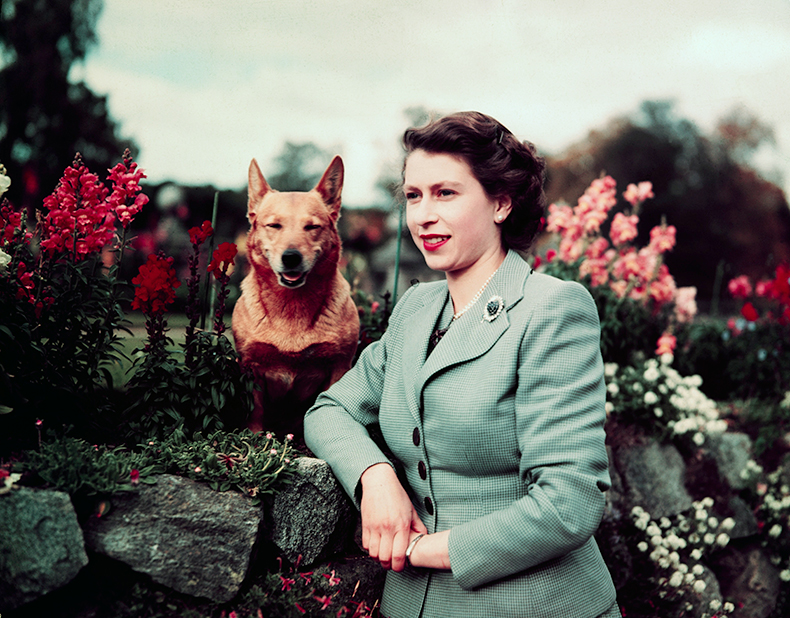
Queen Elizabeth II of England at Balmoral Castle with one of her Corgis, 28 September 1952. Photo: Bettman/Getty Images
To give examples: the third photograph portrays the young Queen in the first year of her reign, leaning on a dry stone wall or rockery. Behind her shoulder, a corgi’s mask looms up like a piece of alarming garden statuary, looking straight at the camera while the Queen looks away. In a photograph from 1969, we see the Queen disembarking from a train with four depressed-looking dogs in a row at her feet. When one considers more animated alternatives that were overlooked, it seems not unreasonable to wonder if Bray has been struck by Spanish thoughts while arranging this. Velazquez’ royal dogs, for instance, are often mournful and their presence more enhances than relieves the interior isolation of his subjects, be they dwarves or kings. Goya’s most famous dog, El Perro, now in the Prado, is a howl of existential agony, an abandoned consciousness awaiting its doom. And in the portraits they tend to be an accoutrement of children; to remind us, perhaps, that these solemn little figures in court clothing have another, playful life.
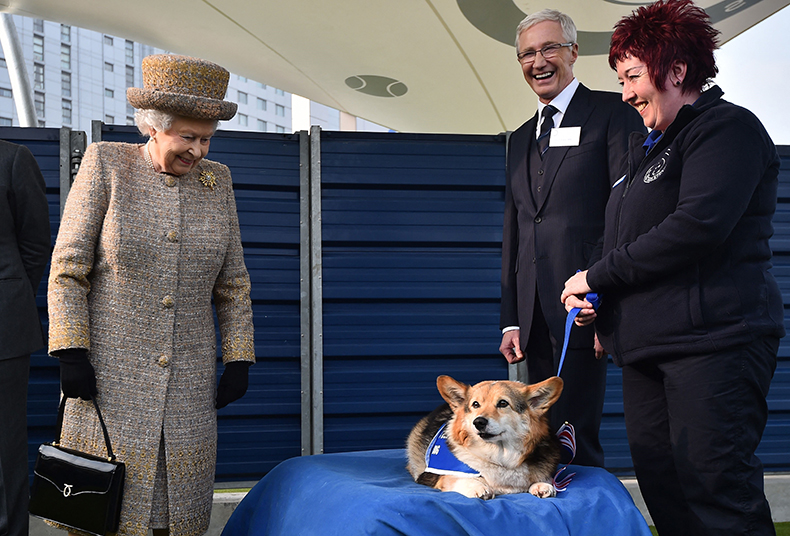
Queen Elizabeth II during a visit to Battersea Dogs and Cats Home in London, 17 March, 2015. Photo by Ben Stansall/ Pool/AFP via Getty Images
That is also the role of the corgis. As Bray points out, ‘We hope this display will show a more personal side of her life.’ But the corgis were more than that. When Princess Elizabeth decided to attach herself to this breed, she couldn’t have known she’d struck a seam of PR genius. To understand its enduring effectiveness, you have only to imagine how different these images would be if she’d decided to breed a less risible-looking dog: Labradors or spaniels, perhaps, the standard companions of the ruling class. But the opinionated Pembrokeshire corgi, with its real smile, its absurdly short legs, big paws, oversized ears, disapproving resting face and its gait of many modes, all of them silly, is above all a comic animal. When they became a symbol of her reign, they made us smile. They lit a hearth of affection for this remote, shy, dogged little person who could make such an unconventional choice, a choice that showed a lack of vanity and the trappings of status. In the photograph from 2015, in which the Queen meets a corgi at Battersea Dogs home, the smiles are not only for the dog.
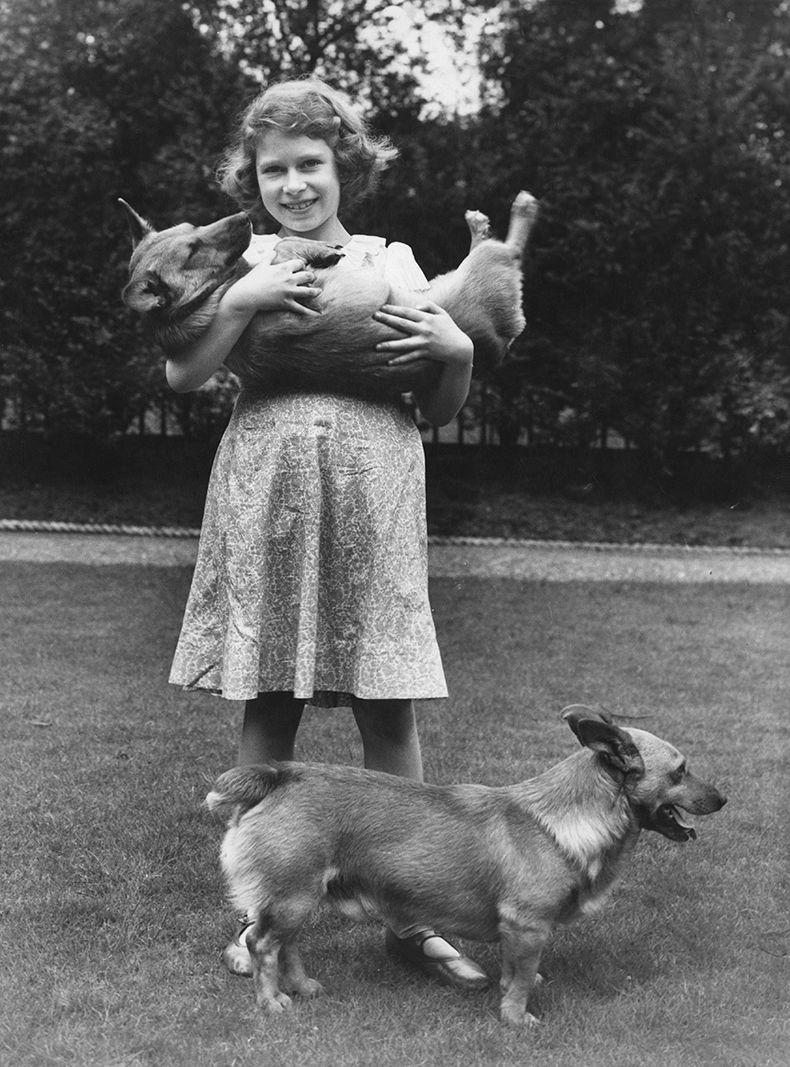
Princess Elizabeth with two corgi dogs at her home in London, July 1936. Photo: Lisa Sheridan/Studio Lisa/Hulton Archive via Getty Images
Bray’s task has not been lightened by the fact that corgis have got a lot better looking since the 1930s. The early pictures show a very different creature to what is current in corgi breeding 80 years later, not unlike the difference between paintings of 18th-century racehorses and the racehorse on the track today. The animal upside-down in the ten-year-old Princess Elizabeth’s arms is quite an ugly little thing, with smooth coarse hair and a long, avid snout like a jackal, but by 1971 prettier characteristics appear, most notably in the photograph of the Queen sitting on a rock beside a waterfall at Balmoral. One of the great images of this exhibition, it recasts a formal composition for holiday time: the Queen and the dog on her lap both beaming in the sunshine.
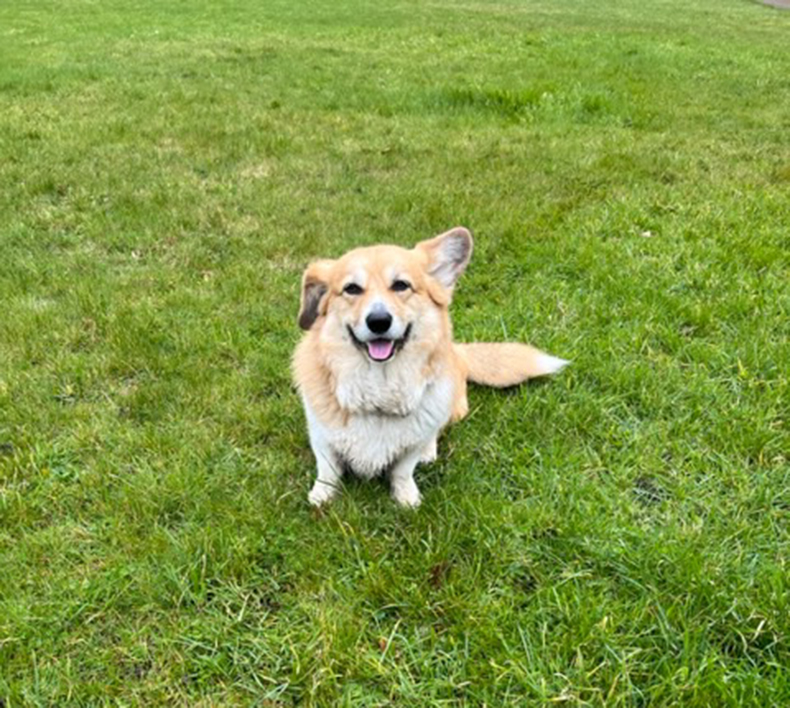
Mishka, an example of the current, more beautiful, corgi. Photo: Nicola Shulman
If anyone cares to learn how the Queen’s dogs got from what they were to what they became, the exhibition includes a panel showing the breeding, a line so branched and immense it could be a map of the London Underground. But many visitors will be deciphering it through misted eyes. The image before it, the last of the photographs, shows her two final corgis in the charge of uniformed palace servants. One of them is flattened to the ground in despair, the other looking anxiously out for someone they can’t find. It’s her funeral and they’ve been brought out to say goodbye.
‘The Queen and her Corgis’ is at the Wallace Collection, London, until 25 June.
Unlimited access from just $16 every 3 months
Subscribe to get unlimited and exclusive access to the top art stories, interviews and exhibition reviews.


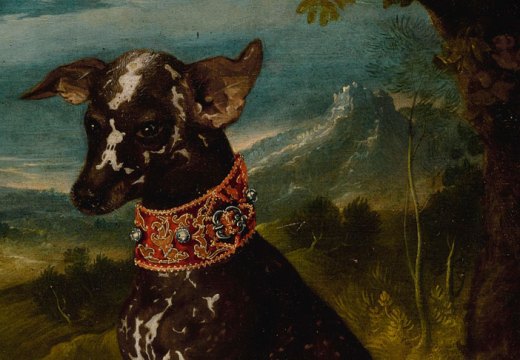
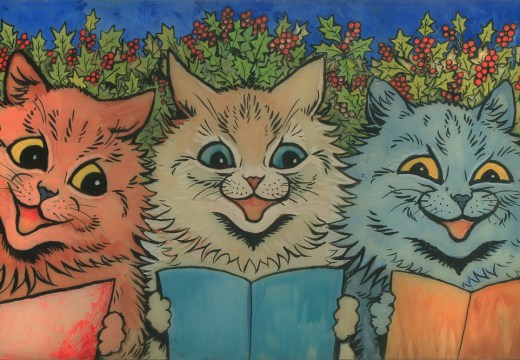
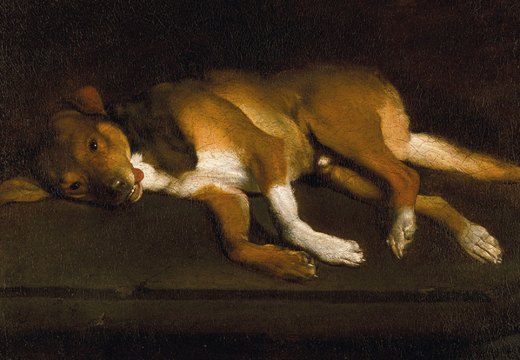









![Masterpiece [Re]discovery 2022. Photo: Ben Fisher Photography, courtesy of Masterpiece London](http://www.apollo-magazine.com/wp-content/uploads/2022/07/MPL2022_4263.jpg)
It’s time for the government of London to return to its rightful home